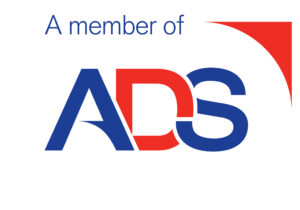Ukraine Country Overview
Ukraine, in Eastern Europe, borders several countries including Russia and Poland. It gained independence in 1991 as a former Soviet republic. With rich soils and a favorable climate, it is a major producer of grains, potatoes, sunflower oil, and sugar beets.
Ukraine General Information
Capital: Kyiv (Kiev)
Language: Ukrainian (official), Russian, Romanian, Polish, Hungarian, Belarusian, Bulgarian
Religion: Christianity (mostly Eastern Orthodox; also other Christians, Roman Catholic, Protestant), Islam
Currency: Hryvnya
Cryptocurrency: Ukraine does not have an official cryptocurrency, but some are used like Bitcoin.
GMT: UTC+2 (Eastern European Time)
Ukraine is located in eastern Europe, bordering the countries Belarus, Russia, Moldova, Romania, Hungary, Slovakia, and Poland.[1] The country as we know it today emerged in the 20th century following periods of successive domination by Poland, Lithuania, Russia, and the USSR, and sought outright independence on August 24th 1991.[2] Following independence, the name ‘Ukraine’ was officially adopted, and the country helped to form the Commonwealth of Independent States, an association of countries formerly republics of the Soviet Union.[3]
The Soviet period was marked by rapid industrialisation and intensive farming in Ukraine.[4] This, coupled with a lack of effective pollution controls has served to seriously degrade the environment, with some of the most polluted areas in the world being found in the country.[5] This was all compounded by the 1986 Chernobyl nuclear accident, which created severe environmental issues in the North West of Ukraine.[6] The areas surrounding the Chernobyl power plant will be contaminated and considered unsafe for thousands of years, but this has not halted occupation and farming of these lands.[7]
Ukraine has rich soils and a favourable climate, which has allowed its crop production to become highly developed.[8] It produces considerable output of grain and potatoes, and is among the world’s largest producers of sunflower oil and sugar beets.[9] Ukraine also produces large amounts of barley and corn, which are mostly used for animal feed, as well as leguminous grains and oats.[10] Cattle and pigs are raised throughout Ukraine and are an important part of the agricultural sector.[11] Ukraine also continues to have pockets of heavy industrialisation, particularly in the east of the country.[12]
Ukrainian culture has been influenced by both Western Europe and Russia. Russian is spoken in many areas of the country, and is also used in national publications, broadcasts, and music.[13] However, the vast majority of the population speak Ukrainian, closely related to Russian and Polish.[14]
Ukraine has a population of 43.5 million,[15] and more than two-thirds of the population lives in urban areas.[16] High population densities are found in Ukraine’s highly industrialized regions of the Donets Basin and the Dnieper Bend, as well as in the coastal areas along the Black Sea and the Sea of Azov.[17] Portions of western Ukraine and the areas surrounding the capital, Kyiv, are also densely populated.[18]
[1] https://www.britannica.com/place/Ukraine
[2] ibid.
[3] ibid.
[4] ibid.
[5] ibid.
[6] ibid.
[7] ibid.
[8] ibid.
[9] ibid.
[10] ibid.
[11] ibid.
[12] https://www.bbc.co.uk/news/world-europe-18018002
[13] https://www.britannica.com/place/Ukraine
[14] ibid.
[15] https://www.bbc.co.uk/news/world-europe-18018002
[16] https://www.britannica.com/place/Ukraine
[17] ibid.
[18] ibid.
Russia’s Invasion of Ukraine Overview
On the 24th February 2022, Russia invaded Ukraine on several fronts, ultimately becoming the largest military attack on a sovereign state in Europe and creating Europe’s largest refugee crisis since the Second World War.[1] Indeed, as of January 2023, approximately 17.92 million people had fled Ukraine, and 5.91 million people were internally displaced as of 5 December 2022.[2]
Russia had long resisted Ukraine’s move towards the European Union and Nato.[3] However, Putin’s declared goal on the 24th February 2022 was to “demilitarise and denazify” Ukraine, vowing to protect people from years of “Ukrainian bullying and genocide” per Russia’s propaganda campaign.[4] What was meant to be a quick operation soon developed into a fully-fledged war, with any clear prospect of neutrality for Ukraine now long gone.[5]
Immediately following the 2022 invasion, President Zelensky announced a general mobilisation of the country and all non-exempt men between the ages of 18-60 were required to undergo screening for military service. As of September 2022, approximately 50,000 were voluntarily serving.[6]
Since October 2022, Russia has been using strikes on Ukraine’s power grid in an effort to force the population into submission.[7] Kyiv’s Energy Industry Research Centre suggests that around 100 substation transformers have been hit so far.[8]
However, it is evident that Ukraine is getting better at defending itself, with most Russian drones and missiles being shot down before reaching their targets.[9] Indeed, it is clear that Russia’s actions are not having their desired effect. On city streets, portable generators are used to keep the city running and keep shops open.[10] Further, the invasion has seen countries come together in an effort to provide support to Ukraine, with more than 30 countries providing military equipment.[11] Moreover, the US director of national intelligence, Avril Haines, has stated that Russia is unlikely to capture significantly more territory in 2023.[12]
By the end of 2022, Ukraine regained all northern and north-eastern territories and had made some advances in the east and south of the country.[13] Russia’s declarations of annexation of four Ukrainian oblasts remain unrecognised by the international community.[14]
President Volodymyr Zelenskyy has been widely credited with overseeing a successful defence effort, though his government has also implemented some war-related legal changes that drew international and domestic criticism for their impact on civil liberties.[15]
In spite of the support provided, Zelensky has warned that supplies are dwindling and has asked the UK and other European countries to provide Ukraine with fighter jets, which is something that Western allies have so far declined to do.[16] In response to this, Russia’s embassy in London has warned the UK government against taking this action, claiming that this would have “military and political consequences for the European continent and the entire world.”[17] Despite this warning, the UK Prime Minister, Rishi Sunak has said that nothing is off the table with regards to supplying military aid to Ukraine, and these fighter jets were “part of the conversation.”[18] So far, roughly 10,000 Ukrainian soldiers have travelled to the UK for military training, with some receiving instructions on how to operate Challenger 2 tanks.[19]
The British government has also agreed to start training Ukrainian pilots on Nato-standard aircraft, but has stated that this would be a long-term option as training could take years to complete.[20] The fighter jets, similar to the ones requested by Ukraine, also require extensive maintenance after almost every flight, which will add more time to the process.[21] That said, some Nato member countries are cautious to hand Nato-standard aircraft over to Ukraine for fear that this may risk direct confrontation with Russia.[22] Indeed, the Kremlin has already launched accusations against Nato for being an “aggressor by proxy”.[23] So far, Nato countries have refused to send troops to Ukraine in an effort to prevent direct conflict with Russia.[24]
During the course of the war, Freedom House has reported that millions of Ukrainians have been displaced from their homes, and that Russian forces have engaged in executions, torture, and sexual violence against citizens.[25] It has also been reported that Russian authorities have used intimidation and torture to assert control over political expression and the education system.[26] Furthermore, despite legislative reform passed in an effort to combat corruption within the country, Freedom House has also reported how democracy, human rights and fundamental freedoms are being seriously challenged by the ongoing military conflict.[27]
[1] https://www.cia.gov/the-world-factbook/countries/ukraine/
[2] ibid.
[3] https://www.bbc.co.uk/news/world-europe-56720589
[4] ibid.
[5] ibid.
[6] https://www.cia.gov/the-world-factbook/countries/ukraine/
[7] https://www.bbc.co.uk/news/world-europe-64467774
[8] ibid.
[9] ibid.
[10] ibid.
[11] https://www.bbc.co.uk/news/world-europe-62002218
[12] https://www.theguardian.com/world/2023/mar/08/russia-ukraine-war-at-a-glance-what-we-know-on-day-378-of-the-invasion
[13] https://www.cia.gov/the-world-factbook/countries/ukraine/
[14] ibid.
[15] https://freedomhouse.org/country/ukraine
[16] https://www.bbc.co.uk/news/live/uk-politics-64566762
[17] ibid.
[18] ibid.
[19] ibid.
[20] https://www.bbc.co.uk/news/world-europe-64587197
[21] ibid.
[22] ibid.
[23] ibid.
[24] https://www.bbc.co.uk/news/world-europe-18023383
[25] https://freedomhouse.org/country/ukraine
[26] ibid.
[27] ibid.
Need advice?
If you’d like further information, or to discuss working with us, you can get in touch via our Contact Us page or making an enquiry below.
Drop us a message
To learn more about our legal services kindly reach out by completing the form on the right.
Alternatively, you can contact our office at +44 (0) 20 3875 7422 or leave us a message.
Our team of experts are looking forward to assisting you with your legal needs.
Need advice?
Contact us to discuss your requirements and how we can help





